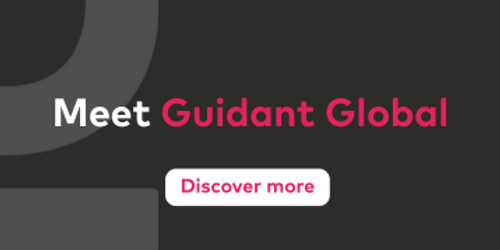

Author
Vice President, Enterprise Solutions
5 minutes
How to Manage Contingent Workers During a Global Acquisition
Increasingly, companies are leveraging mergers and acquisitions as a central strategy to drive business growth. Global mergers and acquisitions, which amounted to $2.6 trillion in 2024, gives companies fast access to new markets, enhanced capabilities, and diversification. At the same time, contingent labor comprises a growing percentage of the workforce as companies look for more flexible talent solutions, access to specialized skills, and cost savings.
With global acquisitions, businesses often gain an even more broadly distributed contingent workforce. While integrating full-time employees after an acquisition normally follows established protocols, incorporating new, internationally dispersed contingent workers requires specialized solutions that maintain regulatory and legal compliance, reduce or eliminate downtime, and ensure no pay disruptions.
HR and Procurement under pressure
Once an acquisition is announced, HR and Procurement teams don’t have the luxury of time. They must move quickly to integrate the entire workforce – including contingent workers – into the acquired company. Doing so is crucial to maintaining business continuity. When it comes to contingent workers, they must navigate complex international labor laws and compliance requirements while ensuring uninterrupted payment processing across different currencies and regions.
This is particularly challenging if contingent workforce programs are centralized globally. In the past, companies operated separate, regionally based managed service provider (MSP) programs. However, more organizations are consolidating global contingent workforce management to drive cost-savings, increase visibility, and gain efficiencies. In the case of a global acquisition, this typically means less internal knowledge related to onboarding contingent workers in new countries.
Additional obstacles might include:
-
The acquired company’s suppliers do not meet the acquiring company's criteria.
-
Standard contracting processes (30+ days) take too long.
-
Local labor laws may prevent direct contracting in certain regions.
-
Currency differences complicate the payment processes.
Key considerations for global contingent workforce integration
During an integration, HR and Procurement leaders must understand country-specific regulations governing employment relationships. For example, in some countries such as Brazil, clients must directly own the supplier contract. Regionally, payment processing and background check requirements differ significantly. And, various tax laws and reporting requirements create additional complexity.
When determining whether to handle the process in-house, consider the following:
-
Market Visibility. Does your team have visibility into global supplier networks? Benchmarking capabilities across different regions? The ability to identify specialized suppliers for niche markets?
-
Resources. Managing an acquisition-related program can involve hundreds of detailed tasks. Workforce absences, turnover, or competing priorities can derail integration efforts.
-
Compliance and Risk Management. Do you have internal expertise in diverse regional regulations and international labor laws?
-
Technology Limitations. Specialized global workforce management tools involve expensive licenses. Access to AI and automation can make all the difference when it comes to efficient onboarding. Integrating disparate systems across borders can be challenging.
Depending on the size and scope of the acquisition, many organizations look to external MSP partners for expertise they simply do not have internally. An ideal partner will offer local payment procession capabilities, compliant worker classification management, rapid onboarding, and documentation management across languages and regions.
Partnership has its benefits
Guidant Global works with hundreds of clients in regions around the world through our Consultancy & Talent Advisory to ensure seamless contingent workforce management during mergers and acquisitions.
Drawing from extensive experience delivering workforce solutions to more than 450 organizations and over 200,000 contingent workers globally daily, we work at the speed of M&A, offering tailored solutions rather than cookie-cutter approaches. Our team of workforce management experts is equipped to:
-
Anticipate challenges before they arise.
-
Apply best practices across diverse client situations.
-
Leverage our relationships with global partners, including payment processors.
-
Apply advanced technology and AI for efficient worker onboarding and automated processes that accelerate integration timelines.
Assessing contingent workforce integration success
Whether with the help of a partner, organizations can determine the success of the contingent workforce integration through several key performance indicators:
-
Streamlined, efficient onboarding. How quickly are workers integrated into new systems?
-
Minimal to no downtime. Is work continuing uninterrupted during the transition?
-
No disruption in pay. Are workers receiving timely, accurate payments throughout the transition?
-
Positive candidate experience. Does contingent talent feel secure and informed during the process?
-
Compliance measures. Are all regulatory requirements being met in each region?
As contingent workforce programs expand globally, the challenge of integrating contingent workers during acquisitions will only grow in importance. By developing a strategic approach, organizations can maintain business continuity, ensure worker satisfaction, and achieve compliance while supporting broader growth goals. By partnering with experienced advisors who understand the complexities of global contingent workforce management, corporations can significantly reduce risks and accelerate integration timeframes.
If your organization anticipates growth through acquisition, Guidant Global can help. Reach out to learn more.
Insights to drive workforce performance
Workforce insights in your inbox
Sign up for our newsletter with the latest workforce management news, insights, analysis and more.
Australia
Suite 1403, Level 14
309 Kent Street
Sydney
NSW 2000
United Kingdom
United States
27777 Franklin Road
Suite 600
Southfield
Michigan 48034









